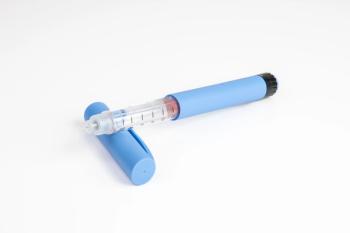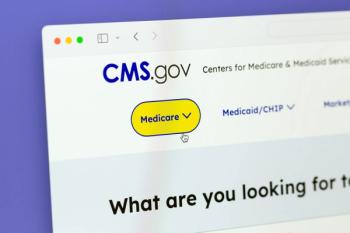
2008 American Heart Association Scientific Sessions: Clinical news updates
Among the new data presented at the 2008 AHA Scientific Sessions were the results of JUPITER, as well as a phase 2 study of rivaroxaban and an observational study of DES versus BMS in diabetics.
Key Points
The 2008 American Heart Association (AHA) Scientific Sessions took place November 8 to 12, 2008, in New Orleans, Louisiana. Among the new data presented were the results of Justification for the Use of Statins in Primary Prevention: an Intervention Trial Evaluating Rosuvastatin (JUPITER), a trial evaluating the efficacy of rosuvastatin in reducing cardiovascular (CV) events in patients with elevated high-sensitivity C-reactive protein (hsCRP) but better-than-average lipid profiles. Other clinical trials of note included a phase 2 study of the investigational oral anticoagulant rivaroxaban and an observational study of drug-eluting stents (DES) versus bare-metal stents in patients with diabetes. This AHA Special Report details these and other trials.
JUPITER
Rosuvastatin treatment of patients with better-than-average lipid profiles but with elevated high-sensitivity C-reactive protein (hsCRP) resulted in a 44% relative risk reduction in CV events and a 20% reduction in all-cause mortality, reported Paul Ridker, MD, lead investigator for the JUPITER Trial Study Group. JUPITER was an investigator-initiated trial sponsored by AstraZeneca.
"While current guidelines for the prevention of heart attack, stroke, and cardiovascular death endorse statins in patients with established vascular disease, diabetes, and hyperlipidemia, the tension in the field is that these treatment strategies are insufficient because the mantra is that half of all heart attacks and strokes that do occur are among individuals who simply don't have overt hyperlipidemia," said Dr Ridker, Brigham and Women's Hospital and Braunwald Professor of Medicine at Harvard Medical School, Boston.
Although many physicians try to improve the identification of high-risk individuals by measuring hsCRP, a strategy of administering statins to patients without established CV risk factors remains controversial.
"Trial results are often overlooked, and implementation would have to occur in family practices, and that is, indeed, where these patients were recruited," said Andrew M. Tonkin, MD, Monash University, Melbourne, Australia. "Ultimately, if we see hsCRP is something to base treatment on, who do you screen?" Dr Tonkin also pointed out that JUPITER patients did have other risk factors in that they were overweight and had a median systolic blood pressure of 134 mmHg.
In a statement, AHA president Timothy Gardner, MD, said, "[JUPITER] was not designed to answer the question of whether the impact on risk was due to a reduction in inflammation or a reduction in [low-density lipoprotein] LDL [cholesterol]. Statins lower both LDL cholesterol and hsCRP. Thus the findings presented . . . cannot determine whether lowering cholesterol, reducing inflammation, or a combination of both is responsible for the effects seen in this paper." In 2003, the AHA and the Centers for Disease Control and Prevention (CDC) concluded that hsCRP, at physician discretion, may be useful to determine the preventive measures needed for patients at intermediate risk.
JUPITER included 17,802 participants with a median LDL cholesterol level of 108 mg/dL and a median high-density lipoprotein (HDL) cholesterol level of 49 mg/dL. "These are lipid levels that all of us would consider excellent, if not outstanding, in a prevention setting," noted Dr Ridker. The median hsCRP was elevated at 4.2 mg/dL (rosuvastatin-treated patients) and 4.3 mg/dL (placebo-treated patients). Patients were randomized to receive rosuvastatin 20 mg/d or placebo and were to be followed for 3 to 4 years for the primary end point: occurrence of a first major CV event (nonfatal myocardial infarction [MI], nonfatal stroke, arterial revascularization, hospitalization for unstable angina, or CV death). However, the Independent Data and Safety Monitoring Board discontinued the trial after a median follow-up of 1.9 years because of a significant primary end point benefit in the rosuvastatin group.
Primary end point events were significantly reduced among rosuvastatin patients (HR=0.56; P<.00001). Rates of hospitalization and revascularization were reduced by 47% within a 2-year period, suggesting that the hsCRP screening and treatment strategy used in JUPITER is cost-effective, Dr Ridker said. He added that a number-needed-to-treat analysis indicated that 25 patients without traditional CV risk factors but with elevated hsCRP would require rosuvastatin treatment over 5 years to prevent 1 CV event. "When used for 5 years, this treatment strategy could conservatively prevent 250,000 first events," he said.
Dr Tonkin, however, said, "The importance of intervention for individuals being treated and for public health policy depends on the absolute risk reduction, not the relative risk reduction." According to Dr Tonkin, for example, the 20% relative risk reduction for all-cause mortality observed with rosuvastatin treatment in individuals with elevated hsCRP alone translates to a 0.055% absolute risk reduction. "We would need to treat 190 people over the course of the study to prevent 1 death," he said.
Unlike many previous statin trials, JUPITER recruited 6,801 women and 5,119 minority patients. There has been controversy regarding whether statins confer the same event prevention and mortality benefits in these groups as has been observed in men.
"The trial had 26 prespecified subgroups, and the key is that all of them reached statistical significance on their own. Women are receiving the same benefit from rosuvastatin as men, and the results are very reassuring for minority patients," said Dr Ridker. There was no significant difference between effect in women versus men, those aged ≥65 years compared with younger patients, smokers versus nonsmokers, Caucasians versus minorities, or between those with elevated hsCRP alone and those with other risk factors, Dr Ridker reported.
"Adverse events are very controversial with this agent," Dr Ridker said. Although recent reports of elevated signals for cancer with rosuvastatin use have been discussed in the news, JUPITER results demonstrated a statistically significant increase in cancer deaths for placebo-treated patients (P=.02). There were 314 cases of cancer among placebo patients and 298 among those taking rosuvastatin, and 58 cancer deaths among placebo patients compared with 35 in the rosuvastatin group.
However, Dr Tonkin questioned the short, 2-year duration of the trial. "While we have an enormous amount of data for statins as a class, showing no increased cancer risk, to detect a signal for solid organ cancers, one needs at least 5 years, up to 20 years of exposure," he said.
As for other adverse events, there was a nominally significant increase in hemoglobin A1c (HbA1c) among rosuvastatin-treated patients at 24 months (5.9% vs 5.8%; P=.001). There was also a marginally significant increase in physician-reported, incident diabetes among patients in the rosuvastatin group (P=.01). There were no differences between active treatment and placebo in the occurrence of muscle weakness, myopathy, rhabdomyolysis, hemorrhagic stroke, fasting glucose levels, or glucosuria.
The results of JUPITER were published in the electronic version of the New England Journal of Medicine and are available at
I-PRESERVE
ARB ineffective in HF with preserved ejection fraction
The use of irbesartan for heart failure with preserved ejection fraction (HFPEF) failed to improve outcomes compared with placebo, said Barry Massie, MD, investigator for the Irbesartan in Heart Failure with Preserved EF (I-PRESERVE) trial. These results are consistent with 2 previous trials (Candesartan in Heart Failure: Assessment of Reduction in Mortality and Morbidity [CHARM]-Preserved and Perindopril in Elderly People With Chronic Heart Failure [PEP-CHF]) that failed to demonstrate a positive effect with an angiotensin-receptor blocker (ARB) for these patients, said Dr Massie, University of California, San Francisco.
"Angiotensin-converting enzyme [ACE] inhibitors and ARBs are commonly used to treat this condition even though there are no randomized clinical trials to justify it," said Margaret Redfield, MD, Mayo Clinic, Rochester, Minnesota. The 3 trials taken together clearly indicated that diuretic treatment produces better results in this large patient population. "It's becoming increasingly apparent that the pathophysiology of this condition is not as simple as we thought. The pathophysiology of aging may need to be considered when developing new treatments," Dr Redfield said.
Approximately half of patients with HF have a preserved EF of ≥45%, and the number is growing as the population ages. This type of HF is most prevalent among the elderly, especially women, and hypertension is the most common underlying condition, Dr Massie said. In the United States, HFPEF causes approximately 500,000 HF hospitalizations and 25,000 deaths annually.
I-PRESERVE included 4,128 patients with HFPEF who were aged ≥60 years and who currently had HF symptoms. All patients had undergone hospitalization related to HF within 6 months before trial entry. New York Heart Association (NYHA) class III and IV patients were required to have suffered from chest congestion and documented left ventricular hypertrophy, as well as either left bundle branch block or left atrial enlargement. Patients were excluded if they had a prior EF <40%, ACS or stroke within 3 months, hypertrophic or restrictive cardiomyopathy, pericardial or valvular disease, cor pulmonale, systolic blood pressure >160 mmHg or <100 mmHg, or any other conditions that could limit life expectancy.
The participants were randomized to receive irbesartan 75 mg/d, which was titrated upward to 300 mg/d, or placebo. The mean dose achieved was 275 mg/d. The patients were followed every 4 months until 1,440 primary end points occurred. The primary end point was a composite of all-cause mortality and hospitalizations for HF, MI, stroke, and arrhythmia. Secondary end points included a composite of death caused by worsening HF and sudden death or hospitalization because of worsening HF; Minnesota Living with Heart Failure score; CV death, MI, or stroke; and CV death.
There was no significant difference between placebo and irbesartan treatment in the primary end point during follow- up. Furthermore, there was no difference in secondary end points between the 2 groups. "In fact, the majority of hospitalizations were for worsening heart failure," Dr Massie said.
"For this large group of patients, there is no specific evidence-based therapy," Dr Massie said. Dr Redfield added that a better understanding of the underlying mechanisms of HFPEF is needed to move toward better therapies, but she acknowledged that progress may be difficult. "There is a lack of a clinically relevant animal model for HFPEF," she said.
The results of I-PRESERVE were published in the electronic version of the New England Journal of Medicine and are available at
ATLAS ACS TIMI 46
Rivaroxaban is promising in treatment of ACS
The investigational oral anticoagulant rivaroxaban performed well enough in a phase 2 study in patients with acute coronary syndromes (ACS) to support a pivotal phase 3 trial in patients with ACS, reported C. Michael Gibson, MD.
The Anti-Xa Therapy to Lower Cardiovascular Events in Addition to Aspirin With or Without Thienopyridine Therapy in Subjects With Acute Coronary Syndrome-Thrombolysis in Myocardial Infarction (ATLAS ACS TIMI 46) study enrolled 3,491 stable patients with recent ACS who were taking aspirin and, if deemed necessary by their treating physician, clopidogrel. Patients were randomized to 1 of 4 doses of rivaroxaban or placebo (taken either once or twice daily) for 6 months, and were followed for an additional month after discontinuing the therapy.
The primary goal of the trial was to evaluate safety (clinically significant bleeding) and dose response; a primary efficacy end point that included a composite of death, MI, stroke, and severe ischemia requiring revascularization was also assessed.
As expected, rivaroxaban increased the rate of clinically significant bleeding in a dose-dependent manner. The rates of bleeding were 6.1% with rivaroxaban 5 mg, 10.9% with rivaroxaban 10 mg, 12.7% with rivaroxaban 15 mg, 15.3% with rivaroxaban 20 mg, and 3.3% with placebo. Overall, 82% of the clinically significant bleeding events were not defined as TIMI major or TIMI minor bleeds.
Although rivaroxaban was associated with a 21% relative risk reduction in the primary end point, this reduction did not reach statistical significance (P=.1). The study was not sufficiently powered to detect a significant effect on the primary end point, noted Dr Gibson, chief of clinical research, Beth Israel Deaconess Medical Center, Boston. A 31% relative risk reduction with rivaroxaban on a secondary end point of death, MI, or stroke did reach significance (P=.028).
Based on the study, "we have decided to go forward to phase 3 with the 2 lower doses-2.5 and 5 mg twice daily," he said. These 2 lower doses reduced the risk of death, MI, and stroke by 46% compared with placebo (P=.08) and were associated with a major bleeding rate of 1.2%.
Notably, there was no drug-induced liver injury in the study.
DES VERSUS BMS IN DIABETICS
Drug-eluting stents are associated with increased safety in diabetic patients
DES were associated with decreased rates of death, MI, and revascularization at 3 years of follow-up in diabetic patients compared with BMS, according to the results of a large observational study. "Our primary concern was to look at safety," said Laura Mauri, MD, Brigham and Women's Hospital and Harvard Medical School, Boston.
"Our best estimate now is that one-third of the population will present for coronary stenting and diabetics have a higher prevalence of ischemic heart disease than the general population," Dr Mauri said. Furthermore, percutaneous coronary intervention (PCI) is associated with certain limitations in diabetics because these patients have a higher risk of restenosis, MI, and cardiac mortality after the procedure.
Dr Mauri and colleagues reviewed 21,045 PCI cases performed in nonfederal Massachusetts hospitals between April 1, 2003, and September 30, 2004. She noted that 29% of the PCI patients were diabetic. Researchers then identified 5,423 evaluable diabetic patients and excluded 372 who had received both stent types. Of the remaining PCI patients, 66% (n=3,341) received DES and 34% (n=1,710) received BMS. Among DES patients, 73% received sirolimus-eluting stents only and 25% received paclitaxel-eluting versions only.
To validate the observational study results, researchers applied propensity score matching and performed logistic regression to predict DES treatment by 67 patient, procedural, and hospital variables and then analyzed outcomes in 2,952 matched DES and BMS patients with 1,476 in each group. The primary outcome measures were matched risk differences for mortality, MI, and revascularization rates after 3 years.
The most significant difference observed was a 5.4% reduction in required target vessel revascularization among DES patients compared with BMS patients during the 3-year follow up (P<.001). There was also a 3.3% reduction in MI (P=.02) and a 3.2% reduction in mortality (P=.02) in DES patients compared with BMS patients.
The results demonstrated preserved efficacy of DES in diabetic patients, with no increased hazard of death, MI, or revascularization rates. Longer-term follow-up is needed to determine if this safety profile is maintained in this higher-risk population, Dr Mauri said.
The results of this study were published in Circulation (2008;118:2277–2285).
APPROACH
Rosiglitazone not superior to glipizide in slowing atherosclerosis progression
Rosiglitazone did not significantly decrease atheroma volume compared with glipizide in patients with type 2 diabetes, but it was associated with a significant reduction in the absolute atheroma volume compared with glipizide, reported Richard W. Nesto, MD, PhD.
In a study known as Assessment on the Prevention of Progression by Rosiglitazone on Atherosclerosis in Type 2 Diabetes Patients with Cardiovascular History (APPROACH), 672 patients with type 2 diabetes who were undergoing clinically indicated angiography or PCI had baseline intravascular ultrasound (IVUS) measures of plaque burden in a segment of a nonintervened artery. They were randomized to 18 months of double-blind treatment with either rosiglitazone titrated to 8 mg/d or glipizide titrated to 15 mg/d. Open-label metformin and/or insulin could be added to maintain HbA1c <7%. The change in atheroma volume between groups was the primary end point.
Atheroma volume increased by 0.43% from baseline in glipizide-treated patients and decreased by 0.21% in the group assigned to rosiglitazone. The between-group difference of 0.64% in favor of rosiglitazone failed to achieve significance (P=.12).
The 0.21% decline in atheroma volume from baseline in the rosiglitazone group was greater than the 0.16% decline from baseline obtained with pioglitazone in the Pioglitazone Effect on Regression of Intravascular Sonographic Coronary Obstruction Prospective Evaluation (PERISCOPE) trial, noted Dr Nesto, associate professor of cardiovascular medicine, Lahey Clinic, Burlington, Massachusetts. However, a between-group difference in normalized total atheroma volume of 5.2 mm3 favored rosiglitazone, and the difference in this secondary end point did achieve significance (P=.04).
The incidence of major CV events was not significantly different between groups, but the study was not powered to detect a difference in clinical outcomes, said Dr Nesto.
The incidence of hypoglycemia was more frequent in the glipizide group compared with the rosiglitazone group (28% vs 8%). As expected, fluid retention was more common among patients assigned to rosiglitazone, although there was no difference in the risk of congestive HF.
PPI PLUS CLOPIDOGREL
PPI-clopidogrel interaction explored but no consensus reached
Two studies came to different conclusions about the effect of proton-pump inhibitors (PPIs) on the action of clopidogrel in patients with CV disease who undergo PCI.
One study demonstrated that concomitant use of PPIs with clopidogrel increased the risk of major CV events at 1 year in stented patients.
However, a subgroup analysis of a large, randomized trial of clopidogrel in patients planned for PCI demonstrated no interaction between PPIs and clopidogrel but demonstrated an adverse effect of PPIs on outcomes.
Clopidogrel's antiplatelet properties are thought to be activated by cytochrome P450 2C19, which is the same pathway inhibited by PPIs. Therefore, a pharmacokinetic interaction between these 2 drugs may prevent clopidogrel from achieving its antiplatelet effects, said Ronald E. Aubert, PhD, lead investigator of 1 of the studies.
Using the National Medco Integrated Database file, Dr Aubert and his colleagues selected 16,718 patients who started taking clopidogrel at the time of stent placement and continued treatment for 1 year. He compared the occurrence of major CV events (cerebrovascular events, ACS, CV death, and coronary revascularization) among the PPI users and nonusers.
The adjusted risk of a major CV event at 1 year was 50% higher in the patients taking PPIs compared with those not taking PPIs (P<.0001).
The increased risk among PPI users of attaining the primary end point was driven primarily by hospitalization for recurrent MI, PCI, and unstable angina, and was consistent across all demographic and CV risk groups, said Dr Aubert, vice president, clinical analysis and outcomes research, Medco Health Solutions, Inc., Franklin Lakes, New Jersey.
A subgroup analysis of the Clopidogrel for the Reduction of Events During Observation (CREDO) study demonstrated no such interaction between PPIs and clopidogrel, said Steven P. Dunn, PharmD, adjunct assistant professor of pharmacy, University of Kentucky, Lexington.
In CREDO, patients undergoing PCI were randomized to clopidogrel plus aspirin or placebo plus aspirin for 1 year following PCI. Clopidogrel plus aspirin was associated with a 27% reduction in the relative risk of MI, stroke, or death compared with aspirin alone.
The 28-day rate of death/MI/urgent target vessel revascularization, and the 1-year rate of death/MI/stroke were analyzed based on PPI use at study entry.
Regardless of their randomized assignment, PPI users had a significantly higher rate of events at 28 days than the nonusers (10% vs 6.4%; P=.015), said Dr Dunn. In the clopidogrel group, the 28-day end point was reached by 10.3% of the PPI users and 5.4% of nonusers (P=.051). In the placebo group, the 28-day event rates were 9.5% in the PPI users and 7.5% in the nonusers (P=.221).
"Clopidogrel reduced adverse events at 1 year to an approximately similar degree whether or not patients were on a PPI," said Dr Dunn. Approximately 16.2% of PPI users in the placebo group had an event at 1 year compared with 13.2% in the clopidogrel group, whereas the rates were 10.8% and 7.7%, respectively, in the nonusers.
In the overall study group, the 1-year event rate was significantly higher in the PPI users versus nonusers (14.8% vs 9.2%; P=.001). A test for interaction between the randomized treatment and PPI use at entry demonstrated nonsignificance (P=.69), said Dr Dunn.
CLOPIDOGREL LOADING DOSE
Tailored clopidogrel loading: A new strategy to reduce stent thrombosis?
Tailoring the clopidogrel loading dose based on platelet reactivity according to a vasodilator-associated stimulated phosphoprotein (VASP) phosphorylation index decreased the rate of stent thrombosis in patients undergoing PCI without increasing the rate of bleeding, said Franck Paganelli, MD, PhD.
A certain number of clopidogrel recipients are considered to be hyporesponders, defined as a VASP index of ≥50%. VASP measures clopidogrel binding to P2Y12 platelet-surface chemoreceptor (the 50% cut-off to define responsiveness is an arbitrary definition, most experts agree).
Following a 600-mg loading dose of clopidogrel, 429 hyporesponders to clopidogrel were randomized to a control group that received a 75-mg/d maintenance dosage or a VASP-guided group that received up to 3 more 600-mg loading doses of clopidogrel every 24 hours before PCI to obtain a VASP index <50%.
The primary end point-stent thrombosis at 30 days-occurred in 0.5% of the VASP-guided group and 4.7% of the controls (P=.01). The rate of major adverse CV events-a secondary end point-was also reduced significantly in the VASP-guided patients versus controls (0.5% vs 8.9%; P<.001).
Dr Paganelli, professor of medicine, division of cardiology, Hopital Nord at the University of Marseille, France, said that the results of the study represent a "new paradigm" for dosing antiplatelet therapy to avoid major CV events in patients undergoing PCI.
Elliot Antman, MD, had a more measured assessment. "We are still learning how to use these antiplatelet tests; I personally believe we are not as confident about the antiplatelet-responsiveness tests as we are about INR [international normalized ratio] with respect to the target," said Dr Antman, director of the Samuel A. Levine Cardiac Unit in the Cardiovascular Division of the Brigham and Women's Hospital, Boston.
The best test to use to measure platelet responsiveness is still unknown, he added.
Newsletter
Get the latest industry news, event updates, and more from Managed healthcare Executive.




















































